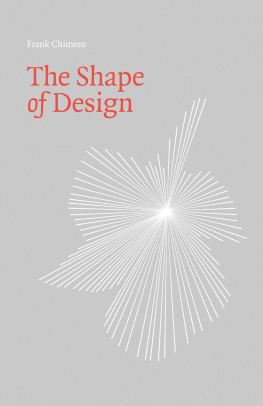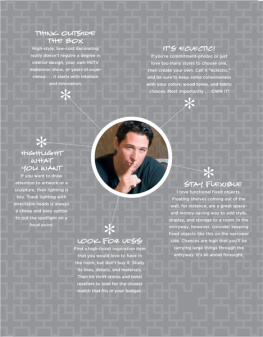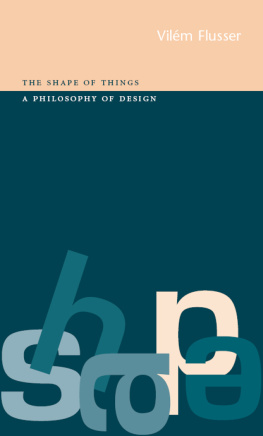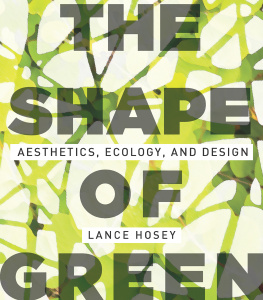Frank Chimero - The Shape of Design
Here you can read online Frank Chimero - The Shape of Design full text of the book (entire story) in english for free. Download pdf and epub, get meaning, cover and reviews about this ebook. year: 2012, publisher: Likemind, genre: Romance novel. Description of the work, (preface) as well as reviews are available. Best literature library LitArk.com created for fans of good reading and offers a wide selection of genres:
Romance novel
Science fiction
Adventure
Detective
Science
History
Home and family
Prose
Art
Politics
Computer
Non-fiction
Religion
Business
Children
Humor
Choose a favorite category and find really read worthwhile books. Enjoy immersion in the world of imagination, feel the emotions of the characters or learn something new for yourself, make an fascinating discovery.
- Book:The Shape of Design
- Author:
- Publisher:Likemind
- Genre:
- Year:2012
- Rating:5 / 5
- Favourites:Add to favourites
- Your mark:
- 100
- 1
- 2
- 3
- 4
- 5
The Shape of Design: summary, description and annotation
We offer to read an annotation, description, summary or preface (depends on what the author of the book "The Shape of Design" wrote himself). If you haven't found the necessary information about the book — write in the comments, we will try to find it.
The Shape of Design — read online for free the complete book (whole text) full work
Below is the text of the book, divided by pages. System saving the place of the last page read, allows you to conveniently read the book "The Shape of Design" online for free, without having to search again every time where you left off. Put a bookmark, and you can go to the page where you finished reading at any time.
Font size:
Interval:
Bookmark:
Copyright 2012 Frank Chimero
Licensed under the Creative Commons Attribution Non-Commercial Share-Alike 3.0 Unported License
Editor: Mandy Brown
Copyeditor: Allen Tan
Designer: Frank Chimero
ISBN 978-0-9854722-1-4
http://shapeofdesignbook.com
http://frankchimero.com
For all those on the road
Liz Danzico
Frank Chimero and I came together over a shared commitment to jazz. But not only exchanges of music. We emulated the form. He would write a blog post. I would respond. I would improvise one of his hunches. He would iterate one of my posts. A call-and-response approach to a developing friendship.
We wrote like this alongside one another without ever meeting or speaking directlymuch like many of us: we never meet the people we admire from afar. We read their stories. We watch their videos. We inspect their work. We make up the in-between parts. We improvise. Franks stories became my stories, our stories. This book is, partly, about making things out of stories, and using them to help us live well.
Without warning one day, a mail from Frank appeared in my inbox, introducing himself:
You know what I love about jazz and improvisation? Its all process. 100%. The essence of it is the process, every time is different, and to truly partake in it, you have to visit a place to see it in progress. Every jazz club or improv comedy theater is a temple to the process of production. Its a factory, and the art is the assembly, not the product. Jazz is more verb than noun. And in a world riddled with a feeling of inertia, I want to find a verb and hold on to it for dear life.
My conversations with Frank began to draw a line between the adjacent systems in the world and our own design process. Jazz. Tools. Art. Pizza. Announce a noun, and Frank helps trace its mutable shape to something more active. A verb! The adjacent process.
Deciphering and designing these systems is hard work. Done well, and one gets there the long, hard, stupid way, as Frank frames it in the pages to come, nodding to the gap between efficiency and the extra effort that compels us to make things with pride and compassion. Our process will vary, but steeling ourselves to persist is what Frank gives us the tools to do.
In that way, this book is not unlike a more ubiquitous tool and platform, the U.S. Interstate Highway System. Today, we take it for granted, mostly, but its numbering system at one point had to be designed. At a time when telephone poles lined dirt trails, Bureau of Public Roads employee Edwin W. James and committee were asked to come up with a more expandable system as roads were growing in the 1920 s. They designed what we know today as the Interstate Numbering System. Prior to that, people relied on color codes for direction. Telephone poles ringed with color bands lined highways, corresponding to individual dirt trails across the country. As trails expanded, telephone poles became painted from the ground up, sometimes fifteen feet high, so trying to distinguish among colors became dangerous.
E. W. James changed that. He decided that motorists would be able to figure out where they were at any time given the intersection of any two highways. North/south highways would be numbered with odd numbers; east/west with even numbers; and numbers would increase as you go east and north. The Interstate Numbering System was designed for expansion, anticipating the future contributions of people, cities, unexpectedness. Its a tool. Its a platform. And its still not done nearly years later.
If you wish to use this book as a tool, by all means, put it down at any time. Leave the road. You will find your way back as the intersection of two points will serve as your guide. Then wander back. This is the point of any road or system after all: to take you to a destination in a time in need. Or, consider the book as a platform and musical score: respond to a passage, to a chapter. Consider Franks call your opportunity to respond, and each sentence your opportunity to create. That is the reason they were written.
Im honored to say that since that original mail, there have been many Frank mails in my inbox. Later:
I see a platform and it tells me two things: first, other peoples contributions are important. Second, the world is not done. Wow. If I want to believe anything, its that.
Start improvising.
What is the marker of good design? It moves. The story of a successful piece of design begins with the movement of its maker while it is being made, and amplifies by its publishing, moving the work out and around. It then continues in the feeling the work stirs in the audience when they see, use, or contribute to the work, and intensifies as the audience passes it on to others. Design gains value as it moves from hand to hand; context to context; need to need. If all of this movement harmonizes, the work gains a life of its own, and turns into a shared experience that enhances life and inches the world closer to its full potential.
The designer is tasked to loosely organize and arrange this movement. She is the one who works to ensure this motion is pointed in a direction that leads us toward a desirable future. Marshall McLuhan said that, we look at the present through a rear-view mirror, and we march backwards into the future. Invention becomes our lens to imagine what is possible, and design is the road we follow to reach it. But, there is a snag in McLuhans view, because marching is no way to go into the future. It is too methodical and restricted. The world often subverts our best laid plans, so our road calls for a way to move that is messier, bolder, more responsive. The lightness and joy afforded by creating suggests that we instead dance.
Dancing requires music, and we each have our own song. These songs are the culmination of our individual dispositions. It is a product of our lines of inquiry about the work that we do, and a demonstration of the lens we use to see the world. The first portion of this book concerns itself with these inner movements. We each carry our own tune, and if we listen to ourselves, the song that emerges is composed of the questions that we ask while working, the methods we choose to employ in our practice, and the bias we show by favoring certain responses over others. Each song is the origin of the individuals creativity; it is a personal tune that compels us to make things, and feel obligated to do so in a way specific to ourselves.
The second part of the book looks at the milieu of design: the cultural context of the work we create, the parties involved in its making, those groups relationships to one another, and the expected outcomes of the designers efforts. Design has a tendency to live between things to connect them, so this is analyzed in more detail to find patterns. It looks to weigh the value of fiction, the mutability of artifacts, and the multiplicity of responses available in design. The purpose of all of these assessments is to look at the space around design to identify the moving parts, so one can begin to strategize how to make this movement sway together and respond accordingly as things change.
The last part of the book focuses on the primacy of the audience in design. It assesses methods to create more meaningful connections with them to unlock the great opportunity of this fortuitous arrangement. What can be done if we speak truly and honestly to the audience of our work? Perhaps this changes the success metrics of design to more soft, meaningful qualities, like enthusiasm, engagement, and resonance. Reframing the practice as something more than commerce and problem-solving lets us focus on fundamental issues about utility. It requires us to raise simple, difficult questions about our work, such as, Does this help us to live well?
Font size:
Interval:
Bookmark:
Similar books «The Shape of Design»
Look at similar books to The Shape of Design. We have selected literature similar in name and meaning in the hope of providing readers with more options to find new, interesting, not yet read works.
Discussion, reviews of the book The Shape of Design and just readers' own opinions. Leave your comments, write what you think about the work, its meaning or the main characters. Specify what exactly you liked and what you didn't like, and why you think so.











